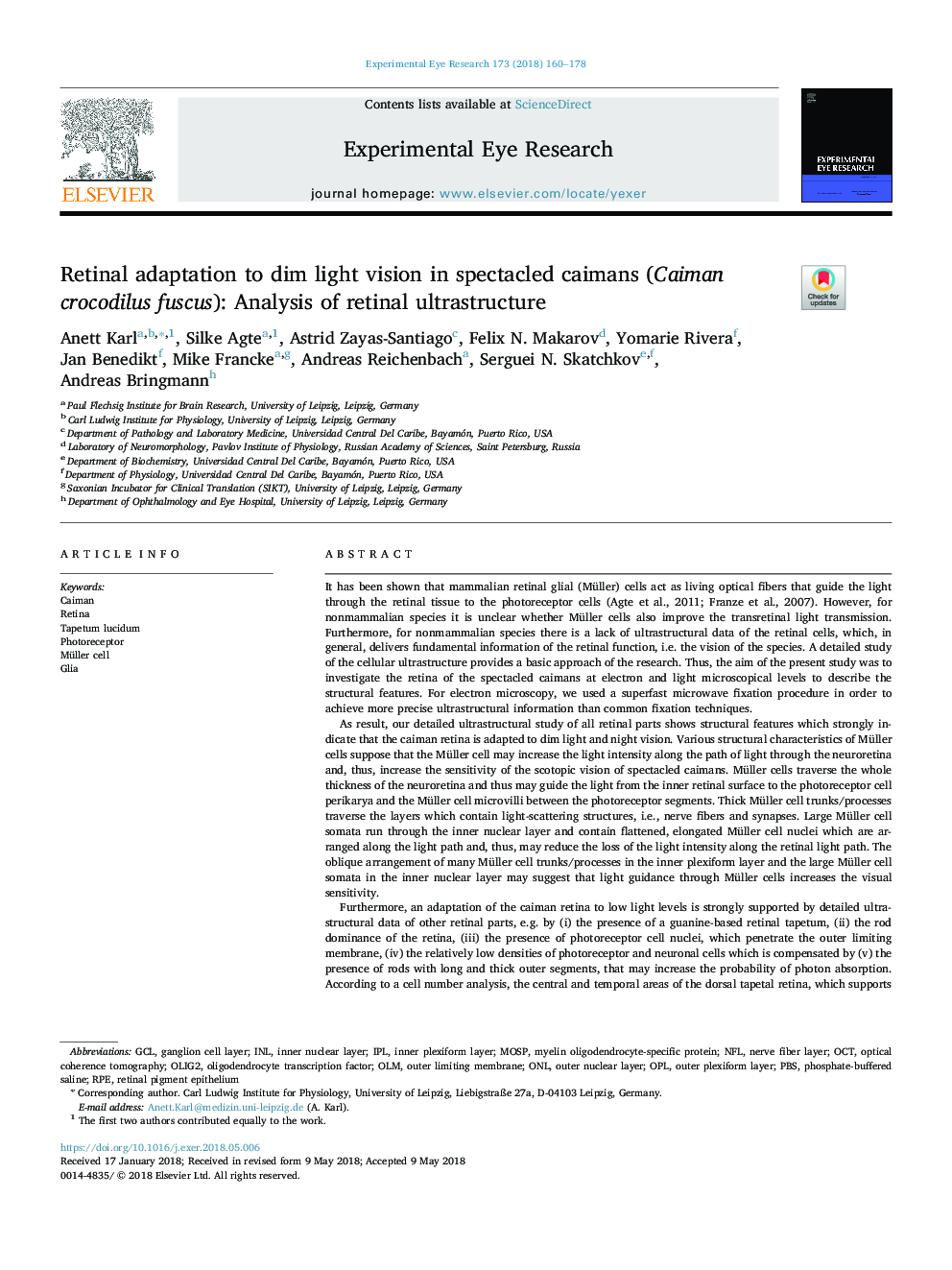| Article ID | Journal | Published Year | Pages | File Type |
|---|---|---|---|---|
| 8791953 | Experimental Eye Research | 2018 | 19 Pages |
Abstract
Furthermore, an adaptation of the caiman retina to low light levels is strongly supported by detailed ultrastructural data of other retinal parts, e.g. by (i) the presence of a guanine-based retinal tapetum, (ii) the rod dominance of the retina, (iii) the presence of photoreceptor cell nuclei, which penetrate the outer limiting membrane, (iv) the relatively low densities of photoreceptor and neuronal cells which is compensated by (v) the presence of rods with long and thick outer segments, that may increase the probability of photon absorption. According to a cell number analysis, the central and temporal areas of the dorsal tapetal retina, which supports downward prey detection in darker water, are the sites of the highest diurnal contrast/color vision, i.e. cone vision and of the highest retinal light sensitivity, i.e. rod vision.
Keywords
Related Topics
Life Sciences
Immunology and Microbiology
Immunology and Microbiology (General)
Authors
Anett Karl, Silke Agte, Astrid Zayas-Santiago, Felix N. Makarov, Yomarie Rivera, Jan Benedikt, Mike Francke, Andreas Reichenbach, Serguei N. Skatchkov, Andreas Bringmann,
